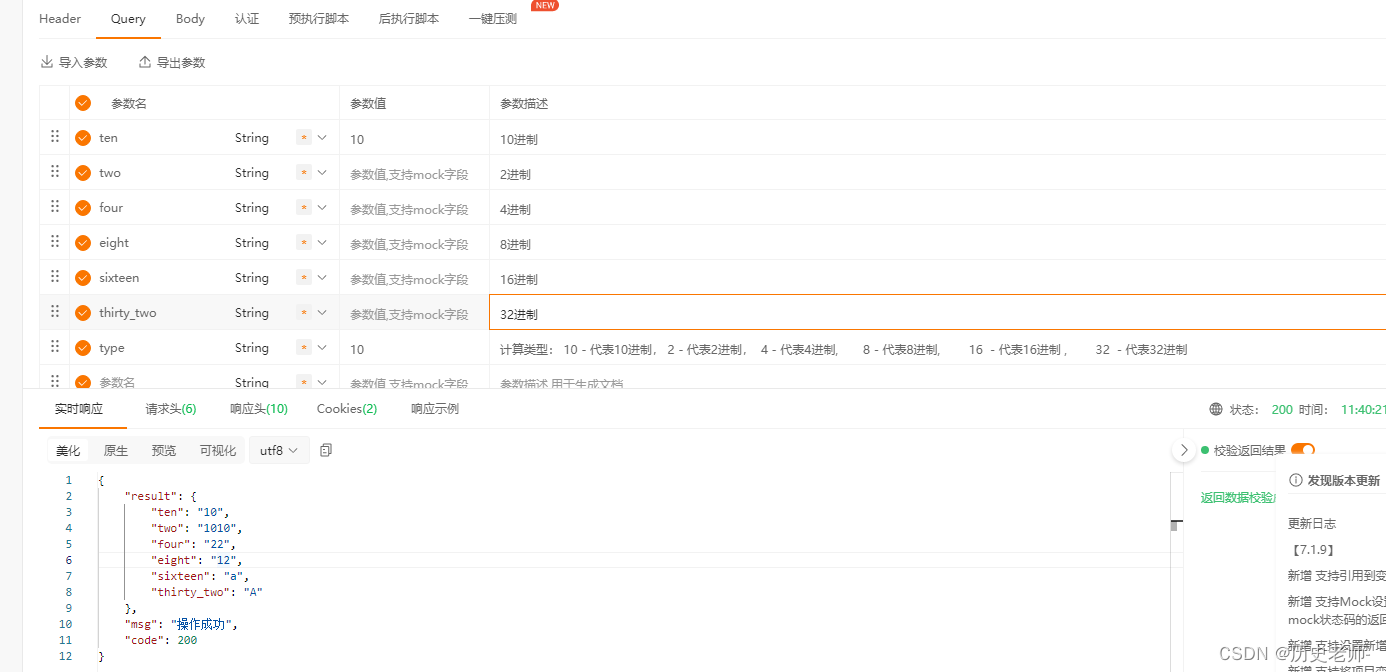本篇内容主要讲解“linux实现线程同步的方式有哪些”,感兴趣的朋友不妨来看看。本文介绍的方法操作简单快捷,实用性强。下面就让小编来带大家学习“linux实现线程同步的方式有哪些”吧!
6种方式:1、互斥锁,本质就是一个特殊的全局变量,拥有lock和unlock两种状态;2、自旋锁,是一个死循环,不停的轮询;3、信号量,用于控制访问有限共享资源的线程数;4、条件变量,可以让调用线程在满足特定条件的情况下运行,不满足条件时阻塞等待被唤醒;5、读写锁,一次只能有一个线程可以占有写模式的读写锁;6、屏障,是用户协调多个线程并行工作的同步机制。
本教程操作环境:linux7.3系统、Dell G3电脑。
linux中实现线程同步的6种方法
下面是一个线程不安全的例子:
#include<stdio.h>
#include<pthread.h>
intticket_num=10000000;
void*sell_ticket(void*arg){
while(ticket_num>0){
ticket_num--;
}
}
intmain(){
pthread_tt1,t2,t3;
pthread_create(&t1,NULL,&sell_ticket,NULL);
pthread_create(&t2,NULL,&sell_ticket,NULL);
pthread_create(&t3,NULL,&sell_ticket,NULL);
pthread_join(t1,NULL);
pthread_join(t2,NULL);
pthread_join(t3,NULL);
printf("ticket_num=%d\n",ticket_num);
return0;
}运行结果如下:
#gccno_lock_demo.c-ono_lock_demo.out-pthread #./no_lock_demo.out ticket_num=-2
最后运行的结果不是固定的,有可能是0、-1,如果有这个ticket_num变量代表是库存的话,那么就会出现库存为负数的情况,所以需要引入线程同步来保证线程安全。
Linux下提供了多种方式来处理线程同步,最常用的是互斥锁、自旋锁、信号量。
互斥锁
互斥锁本质就是一个特殊的全局变量,拥有lock和unlock两种状态,unlock的互斥锁可以由某个线程获得,当互斥锁由某个线程持有后,这个互斥锁会锁上变成lock状态,此后只有该线程有权力打开该锁,其他想要获得该互斥锁的线程都会阻塞,直到互斥锁被解锁。
互斥锁的类型:
普通锁(PTHREAD_MUTEX_NORMAL):互斥锁默认类型。当一个线程对一个普通锁加锁以后,其余请求该锁的线程将形成一个 等待队列,并在该锁解锁后按照优先级获得它,这种锁类型保证了资源分配的公平性。一个 线程如果对一个已经加锁的普通锁再次加锁,将引发死锁;对一个已经被其他线程加锁的普 通锁解锁,或者对一个已经解锁的普通锁再次解锁,将导致不可预期的后果。
检错锁(PTHREAD_MUTEX_ERRORCHECK):一个线程如果对一个已经加锁的检错锁再次加锁,则加锁操作返回EDEADLK;对一个已 经被其他线程加锁的检错锁解锁或者对一个已经解锁的检错锁再次解锁,则解锁操作返回 EPERM。
嵌套锁(PTHREAD_MUTEX_RECURSIVE):该锁允许一个线程在释放锁之前多次对它加锁而不发生死锁;其他线程要获得这个锁,则当前锁的拥有者必须执行多次解锁操作;对一个已经被其他线程加锁的嵌套锁解锁,或者对一个已经解锁的嵌套锁再次解锁,则解锁操作返回EPERM。
默认锁(PTHREAD_MUTEX_ DEFAULT):一个线程如果对一个已经加锁的默认锁再次加锁,或者虽一个已经被其他线程加锁的默 认锁解锁,或者对一个解锁的默认锁解锁,将导致不可预期的后果;这种锁实现的时候可能 被映射成上述三种锁之一。
相关方法:
//静态方式创建互斥锁 pthread_mutex_tmutex=PTHREAD_MUTEX_INITIALIZER; //动态方式创建互斥锁,其中参数mutexattr用于指定互斥锁的类型,具体类型见上面四种,如果为NULL,就是普通锁。 intpthread_mutex_init(pthread_mutex_t*mutex,constpthread_mutexattr_t*mutexattr); intpthread_mutex_lock(pthread_mutex_t*mutex);//加锁,阻塞 intpthread_mutex_trylock(pthread_mutex_t*mutex);//尝试加锁,非阻塞 intpthread_mutex_unlock(pthread_mutex_t*mutex);//解锁
例子:
#include<stdio.h>
#include<pthread.h>
intticket_num=10000000;
pthread_mutex_tmutex=PTHREAD_MUTEX_INITIALIZER;
void*sell_ticket(void*arg){
while(ticket_num>0){
pthread_mutex_lock(&mutex);
if(ticket_num>0){
ticket_num--;
}
pthread_mutex_unlock(&mutex);
}
}
intmain(){
pthread_tt1,t2,t3;
pthread_create(&t1,NULL,&sell_ticket,NULL);
pthread_create(&t2,NULL,&sell_ticket,NULL);
pthread_create(&t3,NULL,&sell_ticket,NULL);
pthread_join(t1,NULL);
pthread_join(t2,NULL);
pthread_join(t3,NULL);
printf("ticket_num=%d\n",ticket_num);
return0;
}自旋锁
自旋锁顾名思义就是一个死循环,不停的轮询,当一个线程未获得自旋锁时,不会像互斥锁一样进入阻塞休眠状态,而是不停的轮询获取锁,如果自旋锁能够很快被释放,那么性能就会很高,如果自旋锁长时间不能够被释放,甚至里面还有大量的IO阻塞,就会导致其他获取锁的线程一直空轮询,导致CPU使用率达到100%,特别CPU时间。
相关方法:
intpthread_spin_init(pthread_spinlock_t*lock,intpshared);//创建自旋锁 intpthread_spin_lock(pthread_spinlock_t*lock);//加锁,阻塞 intpthread_spin_trylock(pthread_spinlock_t*lock);//尝试加锁,非阻塞 intpthread_spin_unlock(pthread_spinlock_t*lock);//解锁
例子:
#include<stdio.h>
#include<pthread.h>
intticket_num=10000000;
pthread_spinlock_tspinlock;
void*sell_ticket(void*arg){
while(ticket_num>0){
pthread_spin_lock(&spinlock);
if(ticket_num>0){
ticket_num--;
}
pthread_spin_unlock(&spinlock);
}
}
intmain(){
pthread_spin_init(&spinlock,0);
pthread_tt1,t2,t3;
pthread_create(&t1,NULL,&sell_ticket,NULL);
pthread_create(&t2,NULL,&sell_ticket,NULL);
pthread_create(&t3,NULL,&sell_ticket,NULL);
pthread_join(t1,NULL);
pthread_join(t2,NULL);
pthread_join(t3,NULL);
printf("ticket_num=%d\n",ticket_num);
return0;
}信号量
信号量是一个计数器,用于控制访问有限共享资源的线程数。
相关方法:
//创建信号量 //pshared:一般取0,表示调用进程的信号量。非0表示该信号量可以共享内存的方式,为多个进程所共享(Linux暂不支持)。 //value:信号量的初始值,可以并发访问的线程数。 intsem_init(sem_t*sem,intpshared,unsignedintvalue); intsem_wait(sem_t*sem);//信号量减1,信号量为0时就会阻塞 intsem_trywait(sem_t*sem);//信号量减1,信号量为0时返回-1,不阻塞 intsem_timedwait(sem_t*sem,conststructtimespec*abs_timeout);//信号量减1,信号量为0时阻塞,直到abs_timeout超时返回-1 intsem_post(sem_t*sem);//信号量加1
例子:
#include<stdio.h>
#include<pthread.h>
#include<semaphore.h>
intticket_num=10000000;
sem_tsem;
void*sell_ticket(void*arg){
while(ticket_num>0){
sem_wait(&sem);
if(ticket_num>0){
ticket_num--;
}
sem_post(&sem);
}
}
intmain(){
sem_init(&sem,0,1);//value=1表示最多1个线程同时访问共享资源,与互斥量等价
pthread_tt1,t2,t3;
pthread_create(&t1,NULL,&sell_ticket,NULL);
pthread_create(&t2,NULL,&sell_ticket,NULL);
pthread_create(&t3,NULL,&sell_ticket,NULL);
pthread_join(t1,NULL);
pthread_join(t2,NULL);
pthread_join(t3,NULL);
printf("ticket_num=%d\n",ticket_num);
return0;
}条件变量
条件变量可以让调用线程在满足特定条件的情况下运行,不满足条件时阻塞等待被唤醒,必须与互斥锁搭配使用。
条件变量常用于生产者与消费者模型。
相关方法:
pthread_cond_tcond=PTHREAD_COND_INITIALIZER;//创建条件变量,一个互斥锁可以对应多个条件变量 intpthread_cond_wait(pthread_cond_t*cond,pthread_mutex_t*mutex);//阻塞等待条件满足,同时释放互斥锁mutex intpthread_cond_timedwait(pthread_cond_t*cond, pthread_mutex_t*mutex, conststructtimespec*abstime);//带超时的阻塞等待条件满足,同时释放互斥锁mutex //从条件变量cond中唤出一个线程,令其重新获得原先的互斥锁 //被唤出的线程此刻将从pthread_cond_wait函数中返回,但如果该线程无法获得原先的锁,则会继续阻塞在加锁上。 intpthread_cond_signal(pthread_cond_t*cond); //从条件变量cond中唤出所有线程 intpthread_cond_broadcast(pthread_cond_t*cond);
例子:
#include<stdio.h>
#include<pthread.h>
intmax_buffer=10;
intcount=0;
pthread_mutex_tmutex=PTHREAD_MUTEX_INITIALIZER;
pthread_cond_tnotempty=PTHREAD_COND_INITIALIZER;
pthread_cond_tnotfull=PTHREAD_COND_INITIALIZER;
void*produce(void*args){
while(1){
pthread_mutex_lock(&mutex);
while(count==max_buffer){
printf("bufferisfull,wait...\n");
pthread_cond_wait(¬full,&mutex);
}
printf("produce...\n");
count++;
sleep(1);
pthread_cond_signal(¬empty);
pthread_mutex_unlock(&mutex);
}
}
void*consumer(void*args){
while(1){
pthread_mutex_lock(&mutex);
while(count==0){
printf("bufferisempty,wait...\n");
pthread_cond_wait(¬empty,&mutex);
}
printf("consumer...\n");
count--;
sleep(1);
pthread_cond_signal(¬full);
pthread_mutex_unlock(&mutex);
}
}
intmain(){
pthread_tt1,t2,t3,t4;
pthread_create(&t1,NULL,&produce,NULL);
pthread_create(&t2,NULL,&produce,NULL);
pthread_create(&t3,NULL,&consumer,NULL);
pthread_create(&t4,NULL,&consumer,NULL);
pthread_join(t1,NULL);
return0;
}读写锁
读写锁可以有三种状态:读模式下加锁状态,写模式下加锁状态,不加锁状态。一次只有一个线程可以占有写模式的读写锁,但是多个线程可以同时占有读模式的读写锁。读写锁也叫做共享-独占锁,当读写锁以读模式锁住时,它是以共享模式锁住的,当它以写模式锁住时,它是以独占模式锁住的,读读共享,读写互斥。
一次只能有一个线程可以占有写模式的读写锁,但是多个线程可以同时战友读模式的读写锁。因此与互斥量相比,读写锁允许更高的并行性。读写锁非常适合对数据结构读的次数远大于写的情况。
相关方法:
//创建读写锁 pthread_rwlock_trwlock=PTHREAD_RWLOCK_INITIALIZER; intpthread_rwlock_rdlock(pthread_rwlock_t*rwlock);//加读锁,阻塞 intpthread_rwlock_wrlock(pthread_rwlock_t*rwlock);//加写锁,阻塞 intpthread_rwlock_unlock(pthread_rwlock_t*rwlock);//释放读锁或者写锁 intpthread_rwlock_tryrdlock(pthread_rwlock_t*rwlock);//尝试加读锁,非阻塞 intpthread_rwlock_trywrlock(pthread_rwlock_t*rwlock);//尝试加写锁,非阻塞
例子:
#include<stdio.h>
#include<pthread.h>
pthread_rwlock_trwlock=PTHREAD_RWLOCK_INITIALIZER;
void*read(void*arg){
while(1){
pthread_rwlock_rdlock(&rwlock);
rintf("readmessage.\n");
sleep(1);
pthread_rwlock_unlock(&rwlock);
sleep(1);
}
}
void*write(void*arg){
while(1){
pthread_rwlock_wrlock(&rwlock);
printf("writemessage.\n");
sleep(1);
pthread_rwlock_unlock(&rwlock);
sleep(1);
}
}
intmain(intargc,char*argv[]){
pthread_tt1,t2,t3;
pthread_create(&t1,NULL,&read,NULL);
pthread_create(&t2,NULL,&read,NULL);
pthread_create(&t3,NULL,&write,NULL);
pthread_join(t1,NULL);
return0;
}屏障
屏障(barrier)是用户协调多个线程并行工作的同步机制。屏障允许每个线程等待,直到所有的合作线程都到达某一点,然后所有线程都从该点继续执行。pthread_join函数就是一种屏障,允许一个线程等待,直到另一个线程退出。但屏障对象的概念更广,允许任意数量的线程等待,直到所有的线程完成处理工作,而线程不需要退出,当所有的线程达到屏障后可以接着工作。
相关方法:
//创建屏障 intpthread_barrier_init(pthread_barrier_t*barrier,constpthread_barrrierattr_t*attr,unsignedintcount) //阻塞等待,直到所有线程都到达 intpthread_barrier_wait(pthread_barrier_t*barrier)
例子:
#include<stdio.h>
#include<pthread.h>
pthread_barrier_tbarrier;
void*go(void*arg){
sleep(rand()%10);
printf("%luisarrived.\n",pthread_self());
pthread_barrier_wait(&barrier);
printf("%lugoshopping...\n",pthread_self());
}
intmain(){
pthread_barrier_init(&barrier,NULL,3);
pthread_tt1,t2,t3;
pthread_create(&t1,NULL,&go,NULL);
pthread_create(&t2,NULL,&go,NULL);
pthread_create(&t3,NULL,&go,NULL);
pthread_join(t1,NULL);
return0;
}到此,相信大家对“linux实现线程同步的方式有哪些”有了更深的了解,不妨来实际操作一番吧!这里是网站,更多相关内容可以进入相关频道进行查询,关注我们,继续学习!
推荐阅读:C#实现线程同步有多少种方法?






发表评论 取消回复